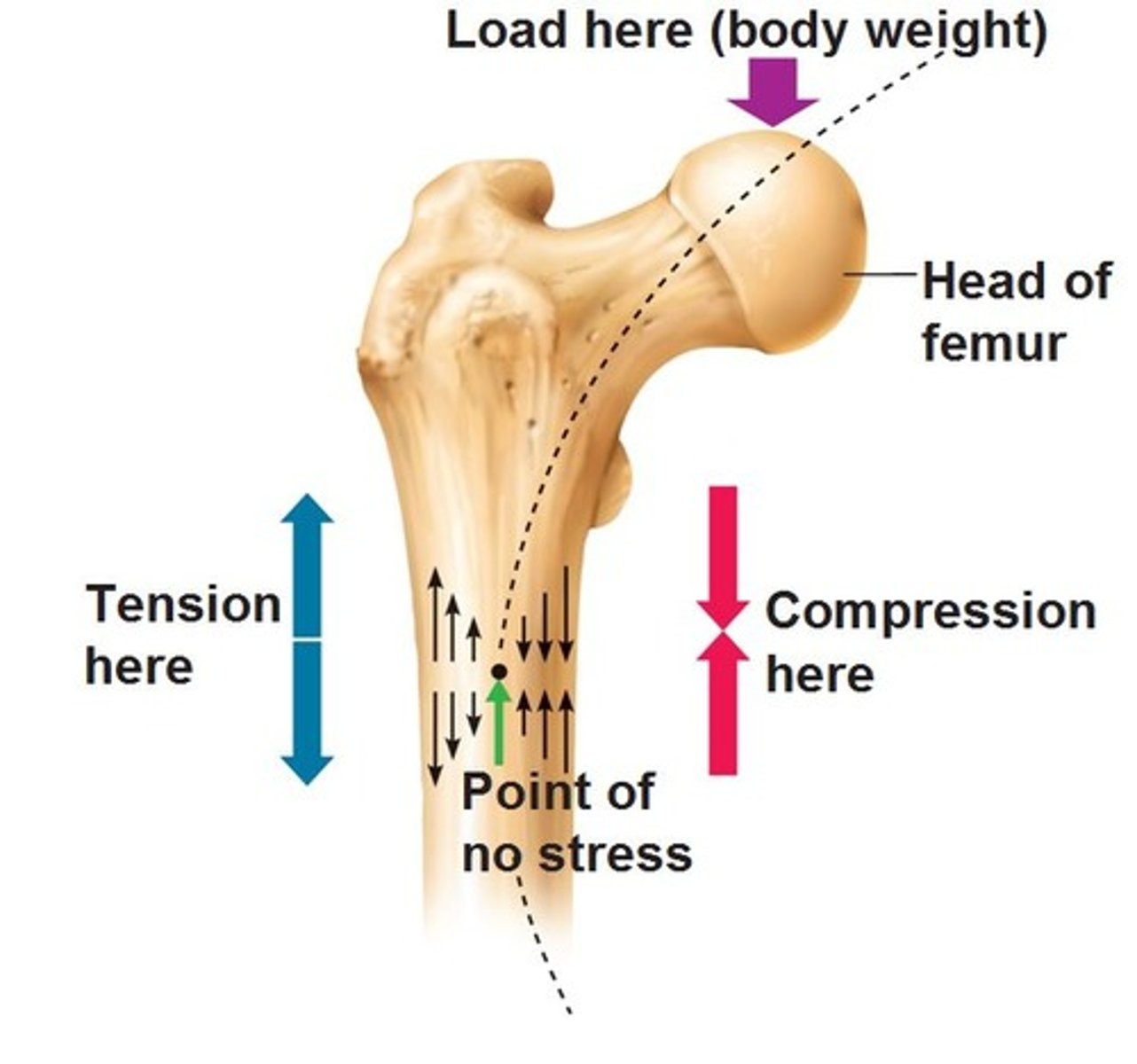Skeletal Tissue (Bone Remodeling, Bone Disorders, and Bone Repair)
1/27
There's no tags or description
Looks like no tags are added yet.
Name | Mastery | Learn | Test | Matching | Spaced |
|---|
No study sessions yet.
28 Terms
What is Bone Remodeling
The constant bone deposit and bone resorption
What is Bone Remodeling Controlled by
Hormonal and mechanical stress
Ratio of Deposition-Resorption in a Healthy Adult
Deposition=Resorption (bone mass remains the same)
How Often is Bone Recycled/Replaced
5-7% bone mass recycled each week
Trabecular bone is replaced every 3-4 years
Cortical bone is replaced every 10 years
What is Calcium Required for
Nerve impulses, muscle contraction, blood clotting, mitosis
What is Hypocalcemia
Low calcium in the blood.
hyperexcitability (muscle spasms)
What is Hypercalcemia
High calcium in the blood.
Non-responsiveness (muscles and nerves)
Describe Bone Deposition
Accomplished by osteoblasts, calcium taken from bloodstream (deposited into bone)
When does Bone Deposit Occur
When bone is injured or requires more strength
Describe Bone Resorption
Accomplished by osteoclasts, lysosomal enzymes digest organic matrix, calcium enters bloodstream
Describe the Parathyroid Hormone
Responds to low blood calcium levels.
Stimulates osteoclasts and inhibits osteoblasts, increasing renal absorption of calcium from urine
Where is the Parathyroid Hormone Produced
Parathyroid glands
Describe Calcitonin
Responds to high blood calcium levels.
Stimulates osteoblasts activity and inhibits osteoclasts
Where is Calcitonin Produced
Thyroid gland
What is Calcitriol
Vitamin D, important for low blood calcium. Stimulates calcium absorption in the small intestine.
Describe Wolffs Law
Bone grows in response to the mechanical stresses placed on it

Vigorous Exercise =
Increased mechanical stress, thicker, stronger bones
What are Bone Spurs
Bony projections that develop in response to continuous stress
What Happens When Bones Experience Lack of Stress
Bone density decreases
What is Osteomalacia
Bones are poorly mineralized, soft, and weak bones
Cause: vitamin D deficiency, lack of dietary calcium
ex: rickets
What is Osteoporosis
Resorption exceeds deposit, normal matrix, but declining bone mass
Risk factors: postmenopausal women
treatment: calcium, vitamin D, weight-bearing exercise
What is Pagets Disease
Excessive haphazard bone deposit and resorption, a high ratio of spongy bone to compact bone
Cause: unknown (viral?)
treatment: calcitonin biphosphonates
What is a Fracture
A broken bone
In youth, usually results from trauma
In old age, it usually results from bone weakness
What are the 4 Parts of Bone Repair
Hematoma Formation
Fibrocartilaginous Callus Formation
Bony Callus Formation
Bone Remodeling
Describe Hematoma Formation
Bleeding at the sight of a fracture causes a hematoma, bone cells deprived of nutrition die, the area swells, inflames, and becomes painful
Describe Fibrocatilaginous Callus Formation
Capillaries invade the hematoma, followed by fibroblasts and osteoblasts, and phagocytic cells clear debris. Fibroblasts differentiate into chondroblasts and form a cartilage matrix
Describe Bony Callus Formation
Within a week, the fibrocartilaginous callus begins to be converted into bone. Trabeculae appear. Occurs for about 8 weeks
Describe Bone Remodeling
Starts with bony callus formation and continues for several months, and spongy bone becomes compact bone.